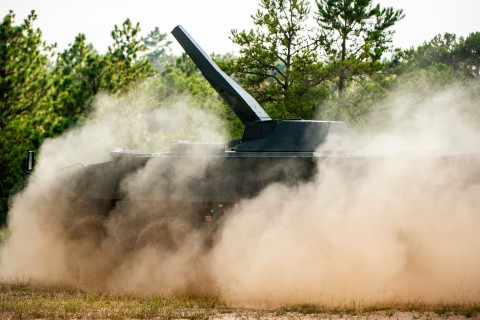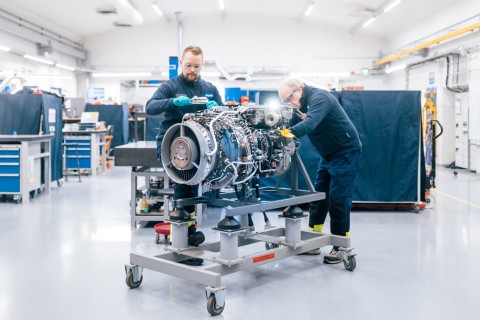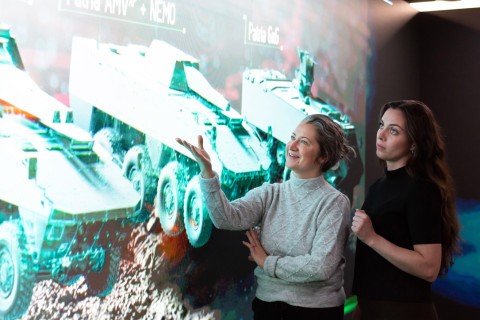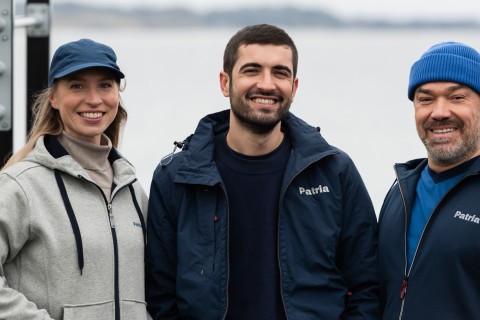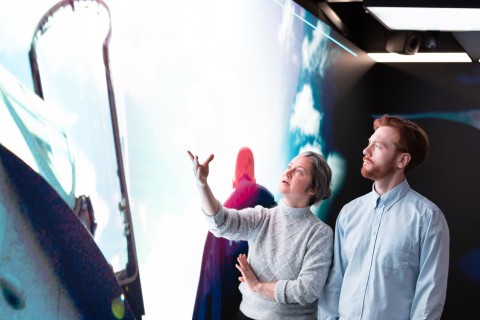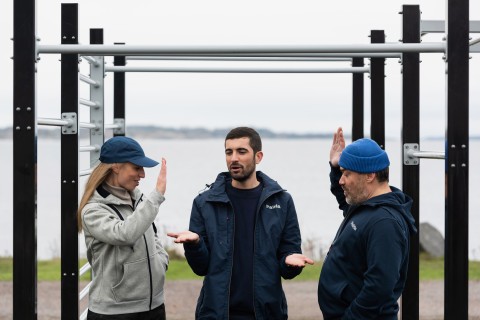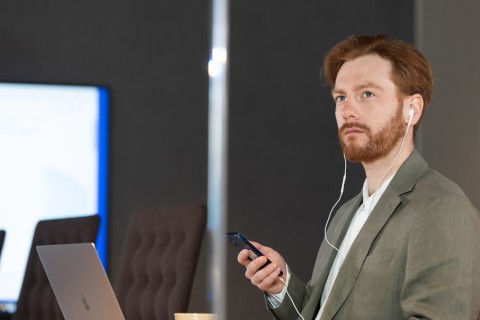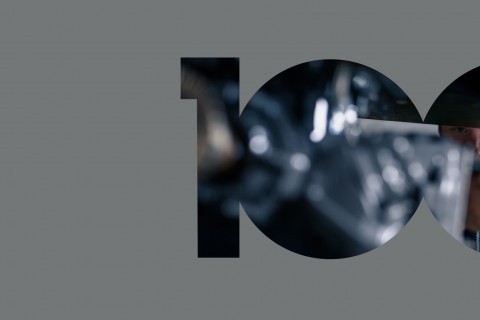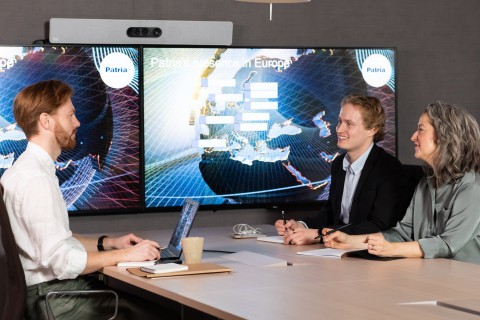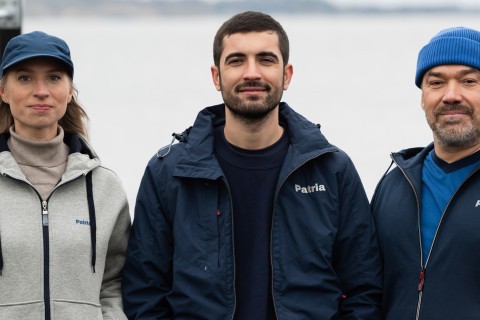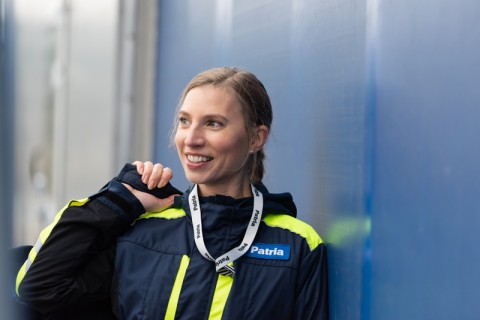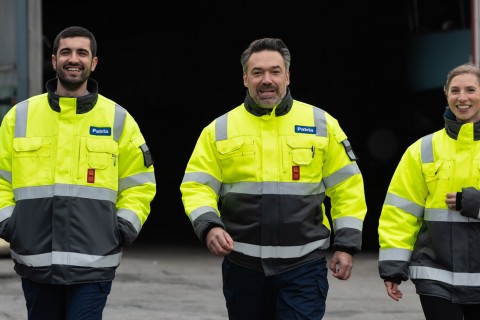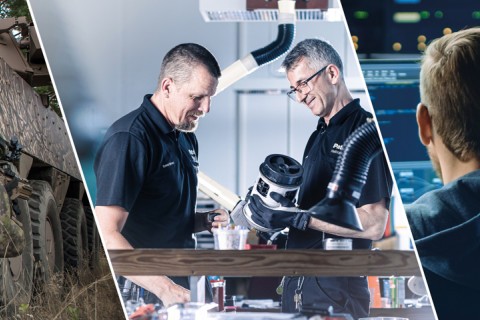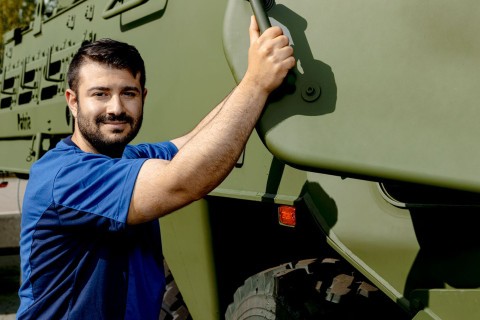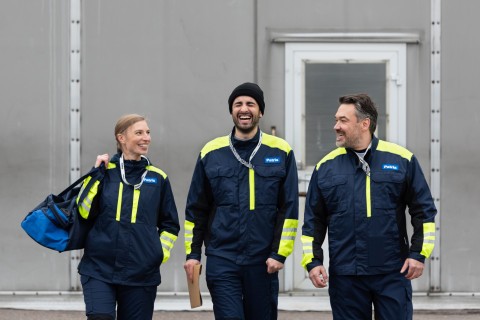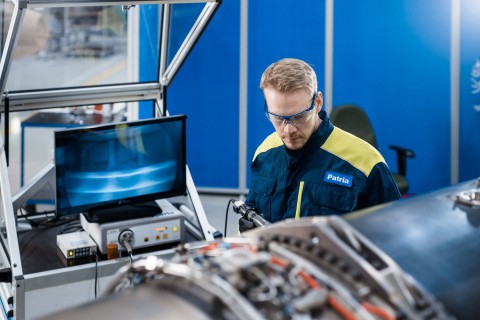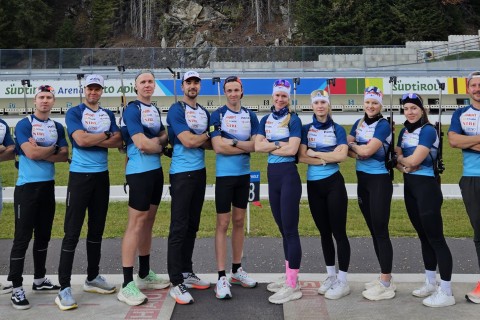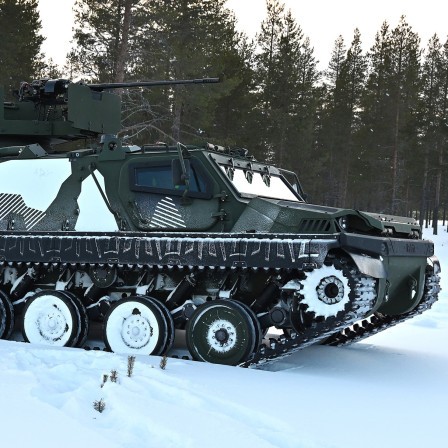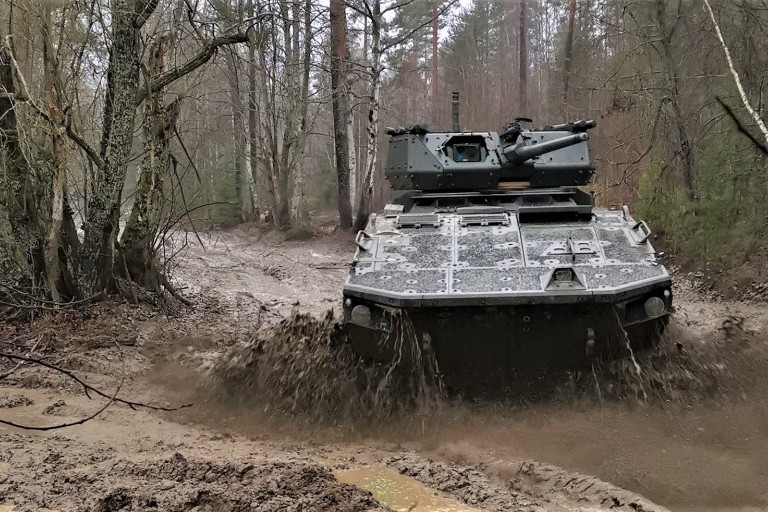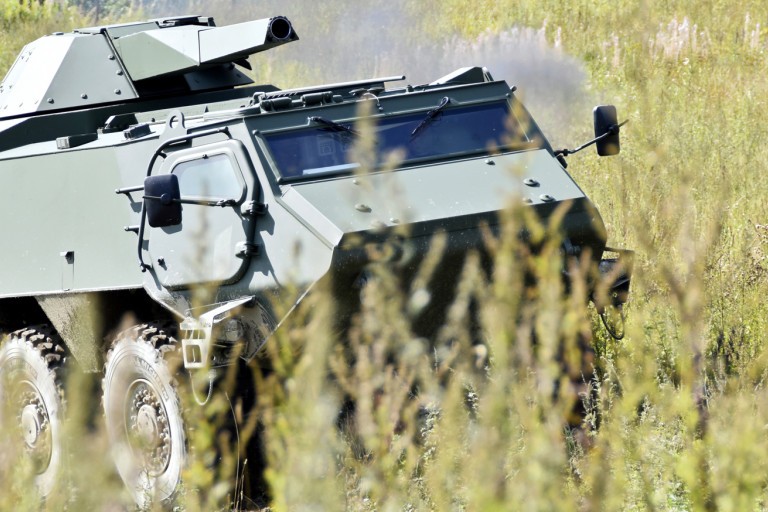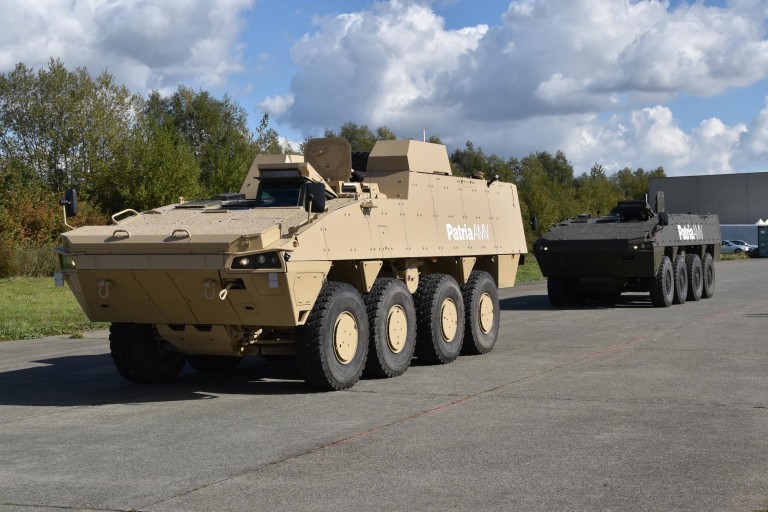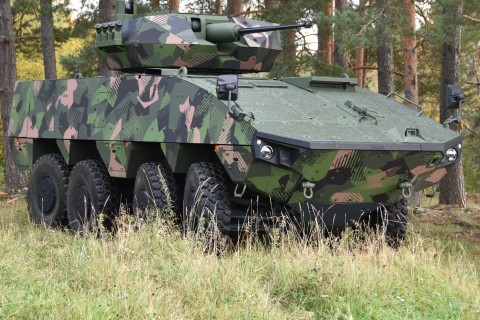
Customer's AMV Guide
21.3.2014
According to a contract signed on 2010, Patria delivers 113 AMV-based Pansarterrängbil 360 vehicles to the Swedish Defence Material Administration (FMV). The first vehicles were delivered in March 2013, and currently the transfer of information and knowledge is taking place in Hämeenlinna, Finland.
Text: Heini Santos
Photos: Christian Lövgren/Swedish Armed Forces and Jani Mahkonen
September 2013, the first internal course kicked off at the Swedish Armed Forces in order for the Swedish instructors previously trained by Patria to now train others within their organization. The next bigger step will take place in January when the entire battalion is scheduled for training. Compared to its predecessors the Pansarterrängbil 360 features many new qualities, such as rear-axle steering, hydropneumatic suspension, new computer-based control and command systems, and improved dashboard layout.
Major Jonas Nilsson of the Swedish Armed Forces' P7 regiment.
"Driving comfort is much better and we can really take advantage of the speed that the vehicle is capable of. The previous vehicle was delivered in the 1980s, so in terms of technology we are now on a totally different level. While fixing the vehicles used to be about hammers and screwdrivers, now we also need computers," says Major Jonas Nilsson who is a Project coordinator of the Swedish Armed Forces regiment P7.
Challenges to win
Although there is a lot to learn about the new vehicle, Nilsson is not very concerned about that. What has been challenging is the 1,5-year delay caused by the buying process. "Like in Finland, the Swedish Armed Forces are going through a big change. Our Regiment used to train mechanized battalions. Now we also train a motorized infantry battalion. That is a big step that is not related to the vehicle but as a transformation it requires a lot more from us than adopting the new vehicle." The Swedish Armed Forces operates differently now than it did three years ago at the time of purchase; for instance the number of units has been reduced dramatically. Also, in 2010 the Swedish troops had just arrived in Afghanistan – now they are getting ready to depart. Despite the challenges caused by the changing operational environment, the vehicle and its systems must be ready January 1st, 2015, when Sweden takes lead in the Nordic Battle Group. "Normally when we buy something, we take the first four vehicles and go through full training with them before deciding how to continue with the rest. This time we had to skip all that and we are solely relying on previous experiences," Nilsson explains. Nilsson finds it positive that the Swedish Armed Forces have a good amount of pull when it comes to the details of the Pansarterrängbil 360, and there is no need to hush up about it. "It is a win-win situation. Of course we cannot ask for a bigger engine that what was defined in the contract, but if one of us comes up with a better way to implement something, Patria can use it in their other products as well. And we ge what we want," he praises. Nilsson describes the basic platform of Patria AMV as well designed, and he predicts a good future and broad demand for it, even by the larger countries.
Sponge for information
From the Swedish perspective, Patria’s strength as a training organization is their Scandinavian way of working as well as steady quality. "They are eager to train us and we see things in the same way. I like the level of coordination and the will to make things work. We are proud of our army and they are proud of their vehicle," he concludes. "Our biggest problem right now is the lack of time and personnel. Of course we need training from Patria because we do not know the vehicle yet, but in the future as the units get smaller and fewer, I believe that it will be more and more important to be able to provide instructors along with the delivered system." Instructor André Mare who has years of experience with previous versions of the vehicle admits that the tight schedule has at times challenged the instructors at Patria as well. "We spend a very short time with the vehicles, yet we have to fully understand it in order to train others. Because of the good cooperation between us, designers and production mechanics, it is possible for us to integrate the required knowledge into the training. Luckily the mentality of the students has been great and it has made everything easier. They are willing to understand and then move on," he says. Mare, who has trained people of many different nationalities before, also emphasizes the advantage of having a common Scandinavian consensus. In addition to good attitudes, the Swedes have up-to-date tools and facilities. "The Swedes are like a sponge when it comes to information; they want to know everything and beyond," he smiles. Nilsson confirms Mare’s characterization by describing features typical of Swedish technicians. "Our technicians are very professional and they are born to fix almost everything themselves. They expect the training to give them detailed information on a deep level. Instead of just knowing how to find out if something is broken they want to know how it is broken and how to read signals from the system. It is very typical of the Swedes." The driving simulators that are part of the training package enable greater amounts of basic-level training as well as allow extra practice on learning the control buttons – known as knappologi in Swedish. "The simulators enable us to practice malfunction situations, such as what to do if there is a fire in the right front tire. The importance of the simulations is higher in countries that do not have areas suitable for on-road and off-road training. In Sweden we have plenty. The vehicle is also very ecological and inexpensive to drive," Nilsson adds.
Managing the training palette
Soon after the contract was finalized in 2010, planning for the training and preparing the training materials began at Patria. The actual courses in Sweden started in February 2013 by familiarizing the entire personnel with the new vehicle. Since then, both end users and maintenance staff have been trained separately, and by next spring the training will reach at least inspectors in the Swedish Armed Forces, storage staff and those who participate in different specialty missions. "We try to organize the training in the client’s facilities – that means we can use their custom equipped vehicles, and in a familiar facility the students can better focus on learning," says Esa Koivula who coordinates the training at Patria. The students are mainly instructors from the Swedish Armed Forces who then will pass the knowledge along within the organization, using course materials from Patria. The package also includes a computer application that enables users to do self-learning regarding the basics of using the vehicle. The four driving simulators delivered this autumn are a more unusual addition to the contract, although Koivula says that from now on they will be a standard part of these kinds of training packages. The know-how of Patria instructors comes from versatile experience. "The instructors’ background often consists of some combination of degrees in pedagogy or vehicle technology, and an army career. They are heavily involved in the prototype phase and they work together with product developers, learning all the new tricks and technology related to that specific project," Koivula explains.
Testing of Patria AMV under way in Hämeenlinna before the vehicle's delivery to the Swedish Armed Forces.
This article was published in the Patria magazine in December 2013
What did you like about the article?
Thank you for your opinion! You can share the article on social media using the buttons below:
